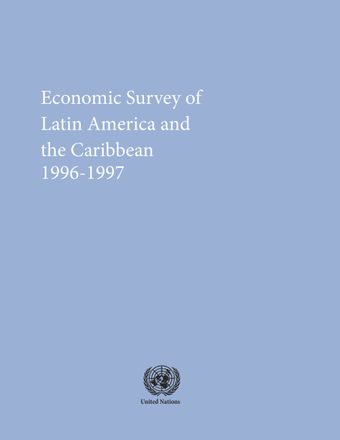Brazil

- Author: Economic Commission for Latin America and the Caribbean
- Main Title: Economic Survey of Latin America and the Caribbean 1996-1997 , pp 159-168
- Publication Date: December 1997
- DOI: https://doi.org/10.18356/0ccf82e1-en
- Language: English
In 1996, Brazil's declining inflation rate reached its lowest level since the 1950s, while the economy experienced only moderate growth, attributable to the restrictive policies put in place to deal with external and fiscal imbalances. A heavy influx of capital, composed mainly of medium-and long-term flows, financed the large balance-of-payments current account deficit. However, the size of the deficit (4% of GDP) and the delay in making significant adjustments to the public-sector accounts prompted concerns that these flows might reverse course, undermining the achievements of the Real Plan in terms of price stability and level of output.
© United Nations
ISBN (PDF):
9789210582988
Book DOI:
https://doi.org/10.18356/2deb1b29-en
Related Subject(s):
Economic and Social Development
Sustainable Development Goals:
Countries:
Brazil
-
From This Site
/content/books/9789210582988s003-c003dcterms_title,dcterms_subject,pub_keyword-contentType:Journal -contentType:Contributor -contentType:Concept -contentType:Institution105
/content/books/9789210582988s003-c003
dcterms_title,dcterms_subject,pub_keyword
-contentType:Journal -contentType:Contributor -contentType:Concept -contentType:Institution
10
5



